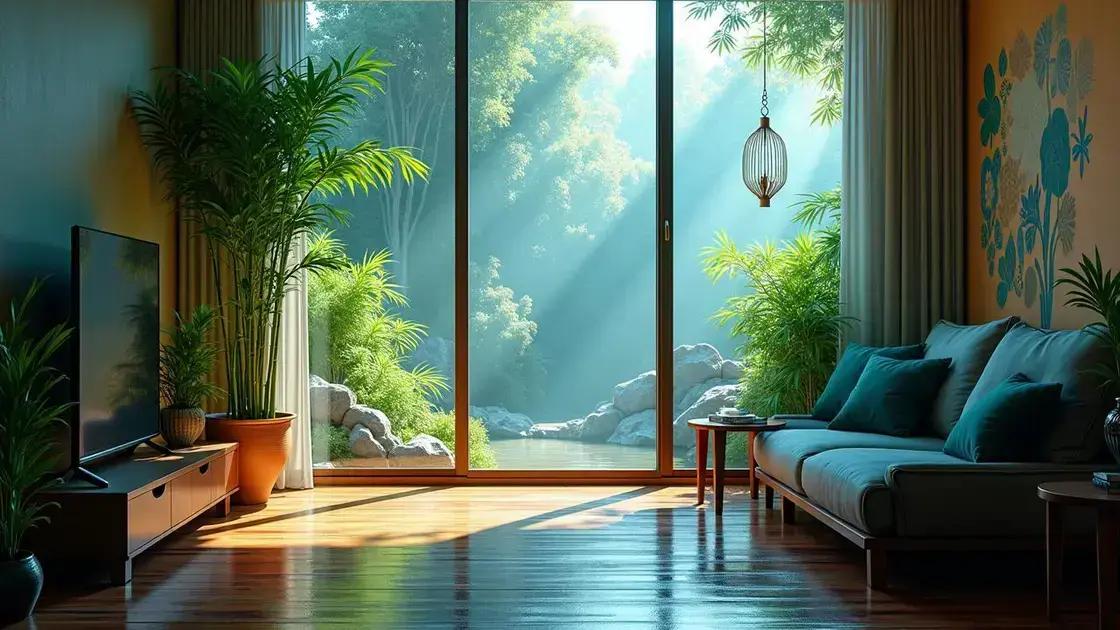How to take care of bamboo house plants can sometimes feel challenging for new plant owners. With their unique needs, these indoor plants can thrive with just a bit of knowledge and attention. In the following sections, we’ll explore what makes bamboo special, ensuring your home is filled with vibrant greenery.
Table of Contents
ToggleUnderstanding light requirements for bamboo plants
Understanding light requirements for bamboo plants is essential for their thriving growth. Bamboo house plants flourish best when they receive adequate and suitable sunlight. This section explores the various light conditions that ensure your bamboo stays healthy and vibrant.
Ideal light conditions
- Indirect bright light is recommended for most bamboo varieties.
- Avoid direct sunlight, which can scorch the leaves.
- Low-light varieties exist that can tolerate dimmer spaces.
Types of light for bamboo plants
- Natural sunlight: Best provided through south or west-facing windows.
- Artificial lighting: Grow lights can supplement natural light during darker months, ensuring consistent growth.
- Dappled light: Bamboo enjoys periods of soft light, mimicking the forest floor’s shade.
Measuring light intensity
| Light Type | Intensity Level | Recommended Duration |
|---|---|---|
| Direct sunlight | High | 1-2 hours |
| Indirect sunlight | Medium | 4-6 hours |
| Low light | Low | All day |
Monitoring your bamboo’s response to light is crucial. If you notice yellowing leaves or stunted growth, it may be time to adjust its location. For more insights on various plants and their needs, check out exploring indoor gardening techniques to enhance your understanding of different light requirements.
By providing the appropriate light conditions, you are setting the foundation for robust bamboo growth. Consistent light exposure, proper placement, and responding to your plant’s needs are essential elements in mastering how to take care of bamboo house plants.
Essential watering techniques for bamboo house plants

Essential watering techniques for bamboo house plants are key to promoting healthy growth and lush foliage. Proper watering ensures that bamboo receives the moisture it needs without drowning its roots.
Understanding bamboo’s watering needs
- Bamboo plants prefer consistently moist soil but should never sit in water.
- Overwatering is a common issue leading to root rot and other diseases.
- Adjust your watering habits according to the season, as bamboo typically requires more water during the growing season.
Watering frequency
- In the spring and summer months, water at least once a week.
- In the fall, reduce watering frequency to every 10 days.
- During winter, scale back further and check the top inch of soil before watering.
Checking soil moisture
| Soil Condition | Action | Signs to Watch For |
|---|---|---|
| Dry (1-2 inches down) | Water thoroughly until liquid drains out. | Leaves may appear curled or droopy. |
| Moist | No need to water; check again later. | Foliage looks healthy and vibrant. |
| Wet | Allow the soil to dry before the next watering. | Yellowing leaves or mushy roots. |
When you regularly monitor moisture levels and adjust your watering schedule accordingly, you ensure your bamboo house plants thrive. For more insights on various plants and their needs, visit exploring indoor gardening techniques.
By prioritizing essential watering techniques, you help your bamboo flourish and maintain its lush, green appearance. Remember that each plant is unique; observing your bamboo will guide you in fine-tuning your care practices.
Fertilizing tips to enhance bamboo growth
Fertilizing tips to enhance bamboo growth are vital in ensuring that your bamboo house plants reach their full potential. Proper fertilization provides essential nutrients that support strong growth, vibrant leaves, and overall health.
Choosing the right fertilizer
- Opt for a balanced, slow-release fertilizer with equal parts nitrogen, phosphorus, and potassium (NPK).
- Organic options like fish emulsion or liquid seaweed can also benefit bamboo.
- Avoid high phosphorus fertilizers, which may harm the plant.
Fertilization schedule
- Spring feeding: Apply fertilizer at the beginning of the growing season as new shoots emerge.
- Summer sustenance: Optional second application can be made mid-summer to support continued growth.
- Fall preparation: Feed lightly in early fall to prepare the plant for dormancy.
Application techniques
| Technique | Description | Frequency |
|---|---|---|
| Broadcasting | Spread the fertilizer evenly around the base of the plant. | Every 4-6 weeks during growth season. |
| Dilution | Mix liquid fertilizer with water and apply to the soil. | Every 2-4 weeks, depending on growth. |
| Top-dressing | Add organic compost around the base to enhance top soil. | Twice a year, ideally in spring and fall. |
Fertilization plays a crucial role in promoting lush bamboo growth. By adhering to these tips, you’ll ensure that your indoor plants thrive beautifully. For more insights into plant care, visit exploring indoor gardening techniques.
Ultimately, nourished bamboo house plants exhibit vibrant color and health, enhancing your interior space effectively. Tailoring your fertilization approach will lead to robust, flourishing bamboo that shines in your home.
In conclusion
Caring for bamboo house plants requires understanding their specific needs in terms of light, watering, and fertilizing. By implementing the techniques we’ve discussed, you will not only ensure that your bamboo thrives but also enhances the aesthetic appeal of your home. Always remember to monitor your plants closely, as each variety may require slight adjustments in care. For additional guidance on optimizing your indoor space, check out tips on enhancing your indoor garden.

